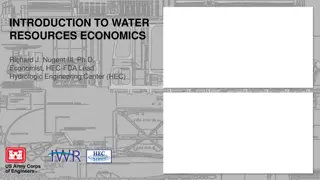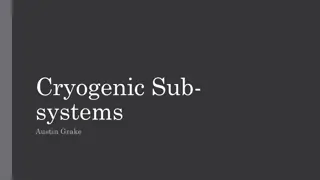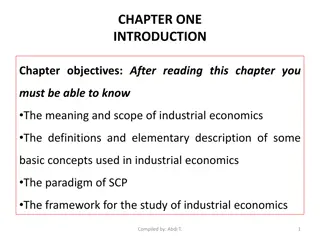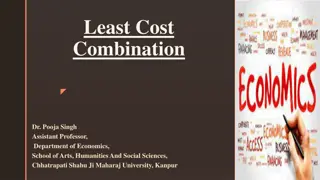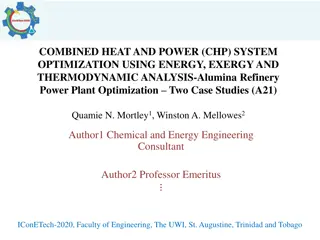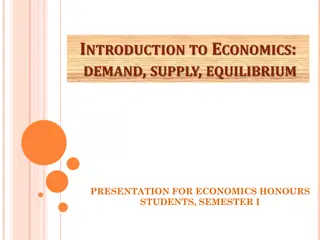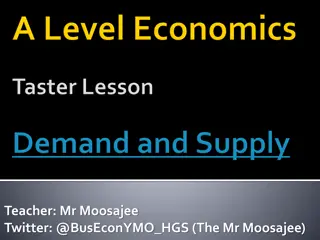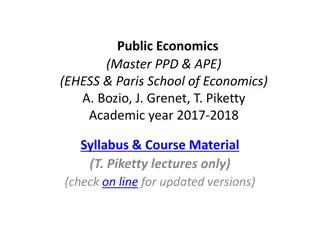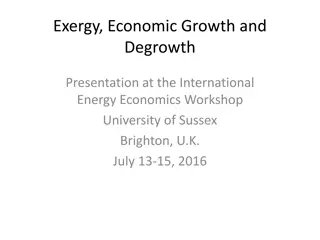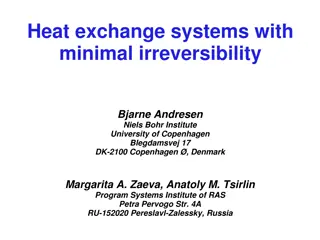
Insights on Exergy Economics and Energy Intensity
Explore the intersection of exergy and economics at the International Exergy Economics Workshop held at the University of Sussex in 2016. Delve into the relationship between energy and GDP, the Solow residual, and the role of energy in economic growth through empirical and theoretical perspectives. Discover how useful exergy measurements shed light on energy intensity and factor shares in Portugal over the years.
Download Presentation

Please find below an Image/Link to download the presentation.
The content on the website is provided AS IS for your information and personal use only. It may not be sold, licensed, or shared on other websites without obtaining consent from the author. If you encounter any issues during the download, it is possible that the publisher has removed the file from their server.
You are allowed to download the files provided on this website for personal or commercial use, subject to the condition that they are used lawfully. All files are the property of their respective owners.
The content on the website is provided AS IS for your information and personal use only. It may not be sold, licensed, or shared on other websites without obtaining consent from the author.
E N D
Presentation Transcript
International Exergy Economics Workshop University of Sussex, 13-15 July 2016 Exergy and Economics Tiago Domingos * with Jo o Santos Andr Serrenho T nia Sousa * tdomingos@tecnico.ulisboa.pt Instituto Superior T cnico, University of Lisbon Portugal
Overview Useful exergy measures energy s contribution to GDP the conceptual basis the last stage before dissipation (useful) valuing heat correctly (exergy); the empirical result: constancy of useful exergy/GDP The economic puzzle (the Solow residual): reconciling GDP growth with the growth of and payments to labour and capital The thermodynamic insight: energy may explain the Solow residual The central challenge: reconciling the role of energy with observed factor shares
Percebois, J. (1979). Is the concept of energy intensity meaningful?. Energy Economics, 1(3), 148-155. 3
Final and useful exergy intensities Portugal 1856-2009 Useful Exergy / GDP Useful exergy / GDP (MJ/2010 ) Final exergy / GDP (MJ/2010 ) Final Exergy / GDP
Final and useful exergy intensities Portugal 1960-2009 Useful Exergy / GDP Final Exergy / GDP Using a GDP-deflator instead of a Consumer Price Index, stability of UE intensity is clearer.
Neoclassical growth model without energy inputs ? ? Aggregate production function ? ? ?
Gross value added (GVA) and conventional factors of production Portugal 1960-2009 7.0 ??????? (?) 6.0 ??? (?) 5.0 4.0 3.0 2.0 ????? (?) 1.0 - 1960 1970 1980 1990 2000 7
Aggregate Production Functions Cobb-Douglas ? = ? ?? ?? (Constant) output elasticities (?,?) reflect the percentage change in output when there is a percentage change in one of the factors, ceteris paribus ? (technical change, or Solow residual) accounts for changes in output not explained by the factors of production The cost-share theorem states that a factor s output elasticity is equal to its cost share (for capital, ~30%; for labour, ~70%) Portugal 1960-2009 ? ?/? (???????? ?? ?????? ?) Elasticity of substitution between factors is one Constant returns to scale: ? + ? = 1 ? ?/? (???????? ?? ??????? ?)
9 26 de junho de 2025 Growth accounting Solow residual Portugal 1960-2009 6.00 6.00 ??? (3.52%/????) 5.00 5.00 4.00 4.00 1960 = 1 3.00 3.00 2.00 2.00 1.00 1.00 ??????? ??? ?????? (1.40%/????) - - 1960 1960 1965 1965 1970 1970 1975 1975 1980 1980 1985 1985 1990 1990 1995 1995 2000 2000 2005 2005 ???? ?? ? ?? ? ?? = 0.71 0.46% 2.12% 0.29 3.66% 3.52%
10 Growth accounting Portugal 1960-2009 ???? Model ?? ? ?? ? ?? = (?,?,?) 0.71 0.46% 2.12% 0.29 3.66% 3.52%
Neoclassical growth model with energy inputs ? ? Aggregate production function ? ? ? ?
Kummel et al. Cobb-Douglas & LINEX ? = ? ?? ?? ??, with Energy-dependent Cobb-Douglas: ? = 1 ? ? LINEX: Aggregate production function introduced by K mmel et al. (1985)* ? ? ? ? ? 1 ? = ? exp ?(?) 2 + ?(?) ?(?) Technology parameters a(t) and c(t) are time dependent. ? = 0.51 Average output elasticities: ? = 0.14 ? = 0.35 ? = 0.10 * K mmel, R., Strassl, W., Gossner, A., & Eichhorn, W. (1985). Technical progress and energy dependent production functions. Journal of Economics, 45(3), 285-311.
Ayres & Warr LINEX with useful exergy Application of LINEX production function with useful exergy and time independent technology parameters. ??? (including animal work) ?? ??(excluding animal work) US 1900-2000 ? = 0.27 Average output elasticities: ? = 0.09 ? = 0.64 Ayres, R.U., & B. Warr (2005). Accounting for growth: the role of physical work. Structural Change & Economic Dynamics 16: 181-209.
Stern & Kander Nested CES with Cobb-Douglas A nested CES production function with energy that embeds a Cobb-Douglas function of capital and labor. ??+ ??= 1 1/? ? 1/??? 1/???? ? ????1 ? ? = ?? + ?? ????? ?? ?????? ?????? Gross output Biased (factor-augmenting) technical change - ??and?? ? Solow residual ? ???? ? ?? ? ?? ? ?? ? ??,?= 1 0.75% 0.46% 2.51% 0.30% 0.49% 0.51% ? ? effective energy supply 14
Economic and energy variables quality-adjusted Portugal 1960-2009 Unadjusted Quality-adjusted 12.0 12.0 10.0 10.0 ??????? (????????) 8.0 8.0 ??????? (??????) 6.0 6.0 4.0 4.0 ??? ??? 2.0 2.0 ????? (?????-???????? ????) ????? ( ????) - - 1960 1970 1980 1990 2000 1960 1970 1980 1990 2000 Capital Stocks (??????) (?) Capital Services (?????????) Labor Hours worked Labor Skill-adjusted hours ( ?) 15
16 26 de junho de 2025 Growth accounting Solow residual Portugal 1960-2009 6.0 ??? (3.52%/????) 5.0 4.0 3.0 ?????????, ? (2.55%/????) 2.0 ??????,? (1.40%/????) 1.0 0.0 1964 1969 1974 1979 1984 1989 1994 1999 2004 2009 ???? ?? ? ?? ? ?? = 0.97% 3.52% 0.29 5.09% 0.71 1.50%
17 Growth accounting Portugal 1960-2009 ???? Model ?? ? ?? ? ?? = 0.71 0.46% (?,??????,?) 2.12% 0.29 3.66% 3.52% (?,?????????,?) 1.71% 3.52% 0.29 5.09% 0.71 0.46% (?,?????????, ?) 0.97% 3.52% 0.29 5.09% 0.71 1.50%
Kmmel, Schmid, Ayres and Lindenberger (2008) are there actually constraints on factor space that arise, for example, from technological relationships among the three factors of production? We postulate that such constraints do exist. * K mmel, R., J. Schmid, R. U. Ayres, D. Lindenberger (2008). Cost Shares, Output Elasticities, and Substitutability Constraints. EWI Working Paper 08.02, Institute of Energy Economics at the University of Cologne.
Aggregate Production Functions through Cointegration Analysis At most 1 cointegration relationship: At most 2 cointegration relationships: No cointegration relationships: Output as a function of three inputs; Output as a function of two inputs; One of the inputs as a function of the other two inputs; No aggregate production function; ? = ? ?????? ? = ?2 ?[?,?]??? ? ? ? ? ? = ?1 ???? ? = 1 ? = 1 ? ? ? = 1 ? ? ? ? ? ? 19
20 Model Cointegrating relationships found ?,??????,? ? = ? 5.19 ?0.60 ?0.40 Implausible cost shares ?????, ? ? = ? 7.12 ?0.45 ?0.65 Implausible cost shares ?,?????? No cointegration. (?,?????????,?) (?,?????????, ?) ? = ? 15.00 ? 0.34 ?1.34 Implausible ? elasticity ? = ? 4.79 ?0.64 ?0.36 ? = ? 4.68 ?1.31 ? 0.31 Implausible cost shares ?,??????,?,? ?????, ?,? ? = ? 7.98 ? 0.52 ?1.57 ? 0.52 Implausible ? elasticity ?,?????? ? = ? 8.65 ?0.37 ?0.63 ? = ?2.78 ?2.34 ? 1.34 ?,?????????,?,? ? = ? 9.65 ?0.31 ?0.69 ? = ?7.69 ?3.11 ? 2.11 ?,?????????, ?,?
21 Growth accounting Portugal 1960-2009 ???? Model ?? ? ?? ? ?? = 0.71 0.46% (?,??????,?) 2.12% 0.29 3.66% 3.52% (?,?????????,?) 1.71% 3.52% 0.29 5.09% 0.71 0.46% (?,?????????, ?) 0.97% 3.52% 0.29 5.09% 0.71 1.50% Coint. w/o Energy No combination of variables satisfies the criteria for economically plausible APF Coint. w/ Energy 0.84% 3.52% 0.29 8.08% 0.71 0.46% (?,?????????(?),?) 0.03% 3.52% 0.29 8.33% 0.71 1.50% (?,?????????(?), ?)
22 26 de junho de 2025 Growth accounting Solow residual Portugal 1960-2009 ?[?], ? (3.49%/????) 6.0 5.0 4.0 ??? (3.52%/????) 3.0 ?????????, ? (2.55%/????) 2.0 ??????,? (1.40%/????) 1.0 0.0 1964 1969 1974 1979 1984 1989 1994 1999 2004 2009
Conclusions Useful exergy seems to be the correct metric for the contribution of energy to GDP Useful exergy, capital services and human capital are able to account for all the Solow residual The observed cost shares of labour and capital are compatible with a fundamental role for energy in economic growth Capital is an increasingly efficient vehicle for delivering useful exergy
International Exergy Economics Workshop University of Sussex, 13-15 July 2016 Exergy and Economics Tiago Domingos * with Jo o Santos Andr Serrenho T nia Sousa * tdomingos@tecnico.ulisboa.pt Instituto Superior T cnico, University of Lisbon Portugal

